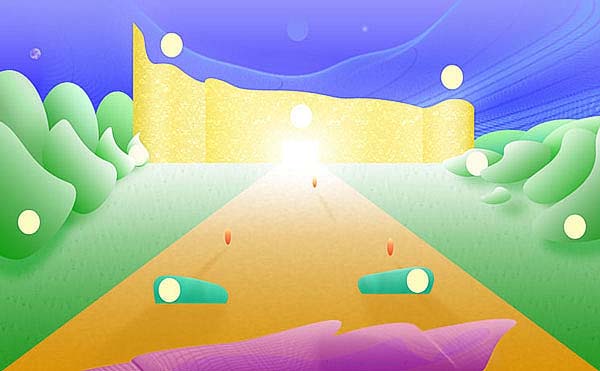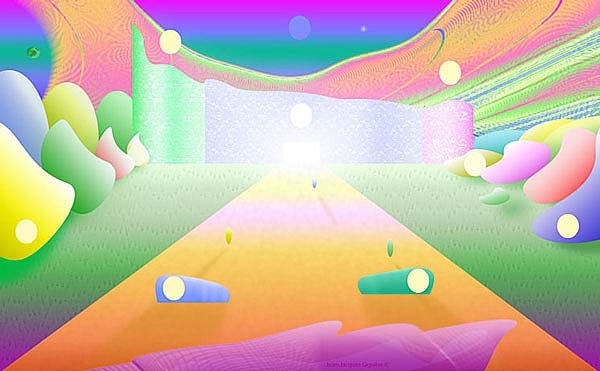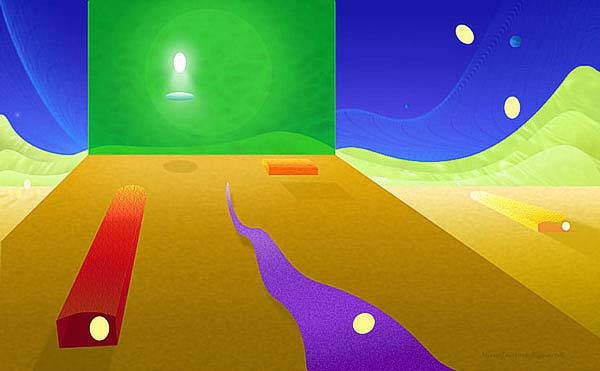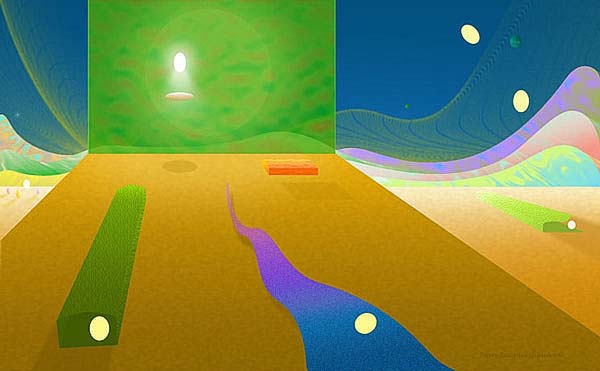Examples of images with targets aim at comparing parallel versus non parallel color.

Game #3,
Virtual image, excerpt from unified image 27 C. Format (768 height x 1024)
The light and the forms are identical in both images.
This game consists of hitting the static targets (yellow to pale yellow and one blue). The ten targets have to appear randomly. The goal is to compile the results in order to measure the reflexes of the participants for each image (parallel versus non parallel color).

Theory: 25 tries or more are necessary to objectively start looking at the anticipated results; the participants reach more targets in the image above.

Game #4,
Virtual image, excerpt from unified image 57 B. Format (768 height x 1024)
The light and the forms are identical in both images.
This game consists of hitting the moving targets (yellow to pale yellow). The 6 targets have to appear randomly. The goal is to compile the results in order to measure the reflexes of the participants for each image (parallel versus non parallel color).

Theory: 25 tries or more are necessary to objectively start looking at the anticipated results; the participants reach more targets in the image above.
|
Flash 2D |
Game 1, parallel environment versus non parallel. Two images, one after the other. |
1024 x 768 |
1.47 mb |
approx 1min 45 sec |
|
|
Flash 2D |
Game 3, parallel environment versus non parallel. Two images, one after the other. |
1024 x 768 |
1.84 mb |
approx 2min |
|
|
Flash 2D |
Game 3 with distractions, parallel environment, One image. |
1024 x 768 |
.98 mb |
approx 1min |
|
|
Flash 2D |
Game 3 with distractions, non parallel environment, One image. |
1024 x 768 |
1.01 mb |
approx 1min |
|
|
Flash 2D |
Game 4, parallel environment versus non parallel. Two images, one after the other. NOTICE, the results are always equal. |
1024 x 768 |
1.01 mb |
approx 1min |
To download, right click and save.
These simple games aim at hitting targets (1, 3 = standing still, 4 = moving). You hear various sounds depending if you meet the target or not. You obtain the results at the end of each game. After 5-10 tries, we start remembering where the targets will appear. Because of this unsolved problem, the results cannot be taken into consideration for research.
However I did try a simple experiment with five female athletes at the university level who played them (only 3 and 5 tries instead of 25), and the number of targets hit did prove to be higher for the parallel game.
With proper programming, images like these and more advanced (2 D and 3 D) can be used to measure the difference between a parallel and a non parallel environment and with games to play parallel against non parallel.
For more information on game #3, please view Power Point (medium) / the last page. Anyone interested in programming games aimed at measuring the cerebral activities. Please contact the research center Vitockey, thank you.
![]()